Hesperides – Greek Nymphs Who Guarded Fabled Garden With Divine Apples Of Immortality
A. Sutherland - AncientPages.com - The most famous garden in Greek mythology was the Garden of the Hesperides. This legendary aromatic place was full of golden apples, which Gaia (Earth) gave to the goddess Hera and Zeus as a wedding gift.
The fabled garden was guarded by the nymphs of the far west, the Hesperides, daughters of the Titan Atlas, who bore the vault of heaven upon his gigantic and robust shoulders.
The land of Hesperides was variously located; eventually, it was placed near North Africa's Atlas Mountains, at the edge of the world ocean, Oceanus.
Three, Four Or More Hesperides Nymphs With Many Names
The parentage of the Hesperides has never been specified. According to the poem Theogony (c. 700 BC) by Hesiod, the Hesperides were daughters of Erebus, one of the first five beings in existence, born of Chaos and the goddess of the night, Nyx. In time, they were also considered to be daughters of Zeus and Themis and most often Atlas and Nyx (or Hesperia). Ancient sources are not specific regarding the number of Hesperides:
Were they three, four, or perhaps even seven of them?
One version of their story prevails and says there were three of them; Apollonius of Rhodes gives their names as Aigle, Erytheis (Erytheia), and Hespera, similar to other triads often encountered in Greek myths.
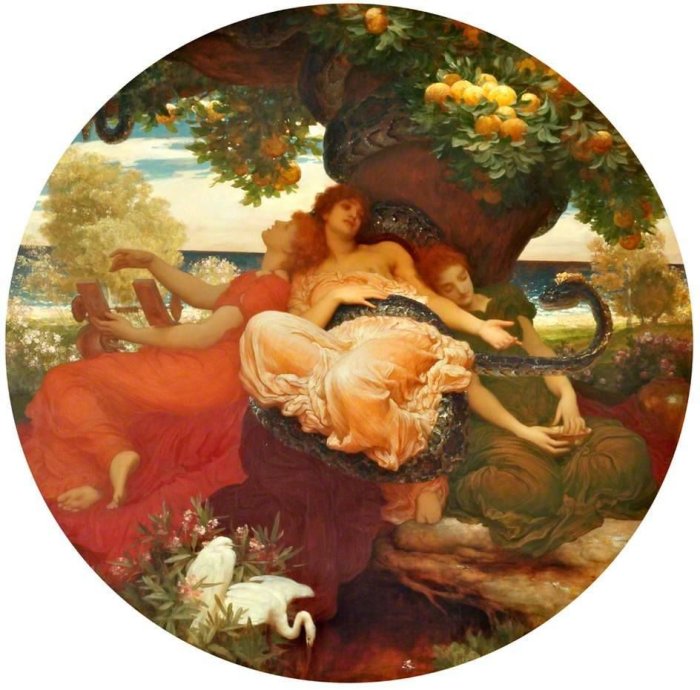
Hesperides Nymphs - The Garden of the Hesperides by Frederick, Lord Leighton, 1892. The Bridgeman Art Library,
The name of these magical ladies originates from Hesperos ('evening'); in Latin, Heperus means the evening star (i.e., the planet Venus). The nymphs of the evening and golden light of sunset have many names, such as the "Daughters of the Evening," "Sunset Ladies," "The Western Women," or "Nymphs of the West."
Untrusted Guardians Of The Golden Apples
The sisters presided over matrimonial pleasures, romance, and the honeymoon night. They could sing wonderfully, but they first guarded divine treasures belonging to the Olympians, including trees with golden apples.
As the sisters were not particularly trusted guardians of the apples (they liked to take apples for themselves), the goddess Hera also appointed an immortal dragon named Ladon as an additional safeguard of the garden.
Heracles in the Garden of the Hesperides. Image credit: Trustees of the British Museum, London
The courageous hundred-headed creature was a very efficient apple tree protector. Ladon never closed his eyes and could fight with many enemies and demons simultaneously. The beast was able to use many different voices and was the offspring of a monster, Echidna "she-viper") a half-woman and half-snake who lived alone in a cave.
She was the mate of the fearsome monster Typhon.
We learn about the garden of the Hesperides from the story of Heracles, the greatest of the legendary Greek heroes and the son of Zeus and Alcmene.
Once driven insane by Hera, Heracles killed his own children in a confused state of mind. As a part of his long punishment, he was forced to carry out twelve arduous labors given to him by his cousin, King Eurystheus.
The twelve labors seemed to be impossible to accomplish.
One of them was to find the Garden of Hesperides and bring (or steal) some golden apples. From Nereus, the Old Man of the Sea, the sea god, and a shapeshifter, Heracles learned about the location of the Hesperides.
Heracles and Ladon guarding the tree of the golden apples. Credit: Carole Raddato, Germany; Uploaded by Marcus Cyron - CC BY-SA 2.
Usually, myths are remembered in different versions. According to one version, Heracles stole the apples after killing the dragon Ladon. According to another, he did it with the help of Atlas.
Titan Atlas Helps To Get Apples
The most popular version of this story is that Herakles asked for Atlas's help obtaining them and even held up the sky while Atlas was retrieving the apples. After returning with the apples, Atlas surprisingly refused to retake his job as the eternal holder of the heavens. He offered to deliver the apples himself, hoping to regain his freedom. Heracles tricked Atlas, walked away with the apples, and could now give them to Eurystheus.
The king did not want the divine apples of immortality; he understood they belonged to the gods, especially to the goddess Hera, so eventually, the apples returned to the Garden of Hesperides.
Golden Apples – A Popular Motif In Ancient Myths
The Golden Apples of the Hesperides remind us of the Golden Apples we encounter in Norse mythology. The apples protected by Idun grant immortality to the Aesir gods living in Asgard.
However, immortality is only available to the gods and never to ordinary people, even if they are kings and nobles.
Updated on February 25, 2024
Written by – A. Sutherland AncientPages.com Senior Staff Writer
Copyright © AncientPages.com All rights reserved. This material may not be published, broadcast, rewritten or redistributed in whole or part without the express written permission of AncientPages.com
Expand for referencesReferences:
Lamstone, J. Greek Mythology
Evslin, Bernard. Heroes, Gods and Monsters of the Greek Myth
Kirk, S. Greek Myths
More From Ancient Pages
-
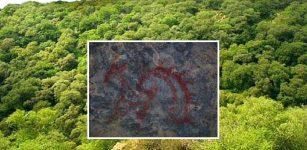 Haryana Caves In Mangar Bani Hide An Ancient Secret – Are These The Oldest Cave Paintings In India?
Archaeology | Jul 28, 2021
Haryana Caves In Mangar Bani Hide An Ancient Secret – Are These The Oldest Cave Paintings In India?
Archaeology | Jul 28, 2021 -
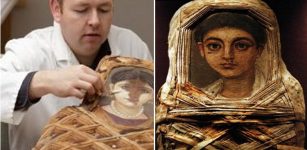 Unexpected discovery of hidden color in ancient mummy portraits
News | Aug 27, 2015
Unexpected discovery of hidden color in ancient mummy portraits
News | Aug 27, 2015 -
 Ukraine – A Place Where People From Different Cultures Intersected Until About 500 Years Ago
Archaeology | Jan 14, 2025
Ukraine – A Place Where People From Different Cultures Intersected Until About 500 Years Ago
Archaeology | Jan 14, 2025 -
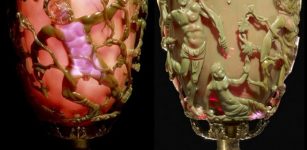 The Lycurgus Cup: Fascinating Artifact That Reveals Prehistoric Knowledge Of Nanotechnology
Ancient Technology | Aug 2, 2018
The Lycurgus Cup: Fascinating Artifact That Reveals Prehistoric Knowledge Of Nanotechnology
Ancient Technology | Aug 2, 2018 -
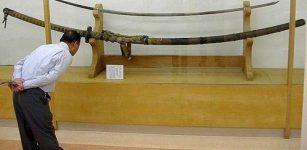 The Norimitsu Odachi – Giant Japanese Sword Remains An Enigma
Artifacts | Mar 22, 2019
The Norimitsu Odachi – Giant Japanese Sword Remains An Enigma
Artifacts | Mar 22, 2019 -
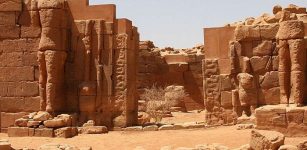 Kingdom Of Nubia: Pyramids And Priceless Secrets Of A Civilization Forgotten Long Time Ago
Civilizations | Feb 13, 2018
Kingdom Of Nubia: Pyramids And Priceless Secrets Of A Civilization Forgotten Long Time Ago
Civilizations | Feb 13, 2018 -
 Ancient Roman Women Wore Bikini In 1400 B.C.
Ancient History Facts | Jul 17, 2017
Ancient Roman Women Wore Bikini In 1400 B.C.
Ancient History Facts | Jul 17, 2017 -
 Why Were Ancient And Medieval People Horrified Of The Night?
Featured Stories | Nov 11, 2024
Why Were Ancient And Medieval People Horrified Of The Night?
Featured Stories | Nov 11, 2024 -
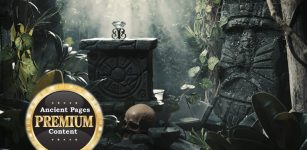 Baffling Structures Unearthed In A Place Where Prehistoric Human Remains Are Missing Is An Ancient Mystery
Ancient Mysteries | Apr 19, 2021
Baffling Structures Unearthed In A Place Where Prehistoric Human Remains Are Missing Is An Ancient Mystery
Ancient Mysteries | Apr 19, 2021 -
 Women’s March On Versailles: One Of The Most Significant Events Of The French Revolution
Ancient History Facts | Oct 11, 2018
Women’s March On Versailles: One Of The Most Significant Events Of The French Revolution
Ancient History Facts | Oct 11, 2018 -
 Tombs Rich In Artifacts Discovered By Swedish Expedition In Cyprus
Archaeology | Jul 6, 2023
Tombs Rich In Artifacts Discovered By Swedish Expedition In Cyprus
Archaeology | Jul 6, 2023 -
 New Macedonian-Era Tomb With Four Chambers Was Discovered In Pella
Archaeology | Dec 23, 2015
New Macedonian-Era Tomb With Four Chambers Was Discovered In Pella
Archaeology | Dec 23, 2015 -
 Secret Ancient Knowledge Of The Druids And The Mystery Of The Missing Library Of Iona
Ancient Mysteries | Sep 4, 2016
Secret Ancient Knowledge Of The Druids And The Mystery Of The Missing Library Of Iona
Ancient Mysteries | Sep 4, 2016 -
 What Was The Danelaw?
Ancient History Facts | Jun 4, 2016
What Was The Danelaw?
Ancient History Facts | Jun 4, 2016 -
 Aboriginal Underwater Sites Off The Coast Of Australia – Discovered
Archaeology | Jul 2, 2020
Aboriginal Underwater Sites Off The Coast Of Australia – Discovered
Archaeology | Jul 2, 2020 -
 How Saul, A Farmer Boy Became The First King Of Israel
Featured Stories | Jan 20, 2022
How Saul, A Farmer Boy Became The First King Of Israel
Featured Stories | Jan 20, 2022 -
 Long-Lost Roman Bridge Re-Discovered In Chepstow River Wye Mud, UK
Archaeology | Aug 12, 2023
Long-Lost Roman Bridge Re-Discovered In Chepstow River Wye Mud, UK
Archaeology | Aug 12, 2023 -
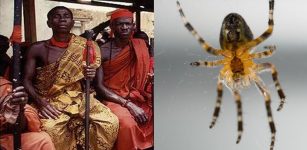 Anansi The Spider: Trickster And Spirit Of Knowledge In African Mythology
African Mythology | Jul 20, 2016
Anansi The Spider: Trickster And Spirit Of Knowledge In African Mythology
African Mythology | Jul 20, 2016 -
 Evil Spirits And Demons Of Marshes And Swamps In Slavic Folklore
Featured Stories | Nov 16, 2016
Evil Spirits And Demons Of Marshes And Swamps In Slavic Folklore
Featured Stories | Nov 16, 2016 -
 Human And Neanderthal Brains Have A Surprising ‘Youthful’ Quality In Common – New Study
Featured Stories | Jan 6, 2023
Human And Neanderthal Brains Have A Surprising ‘Youthful’ Quality In Common – New Study
Featured Stories | Jan 6, 2023



